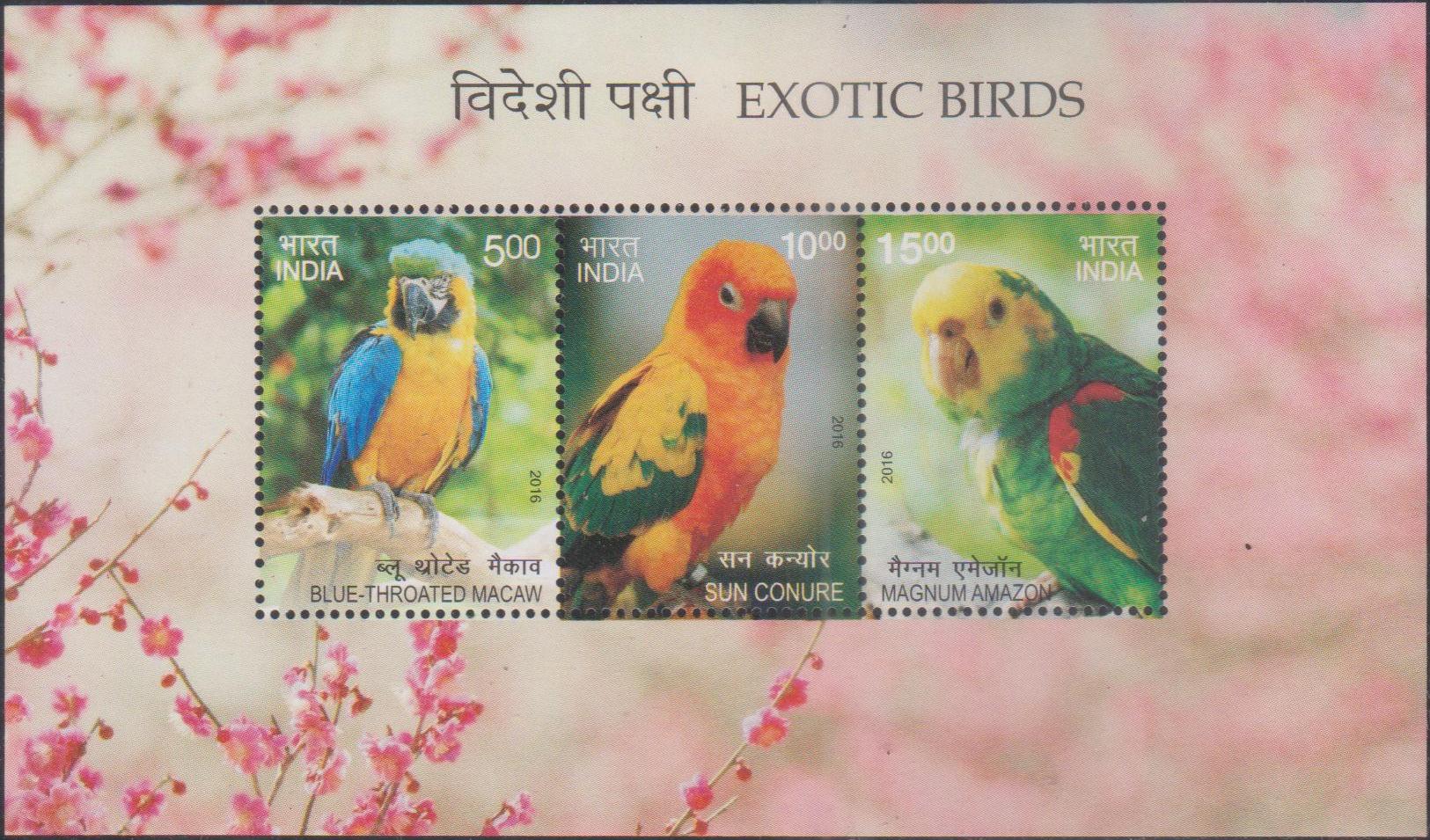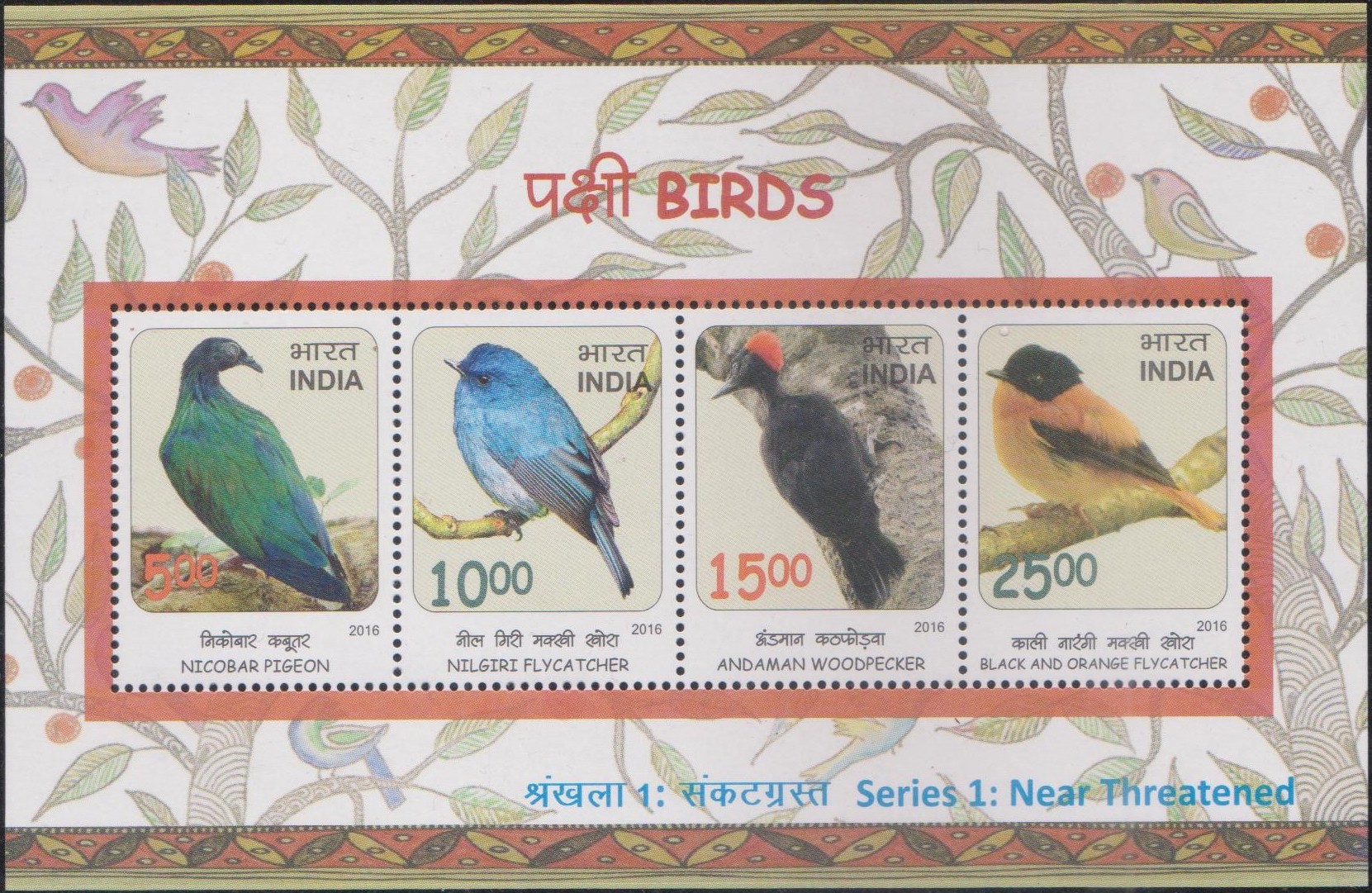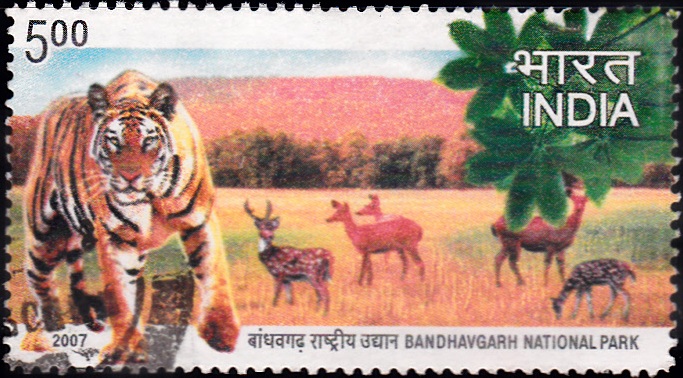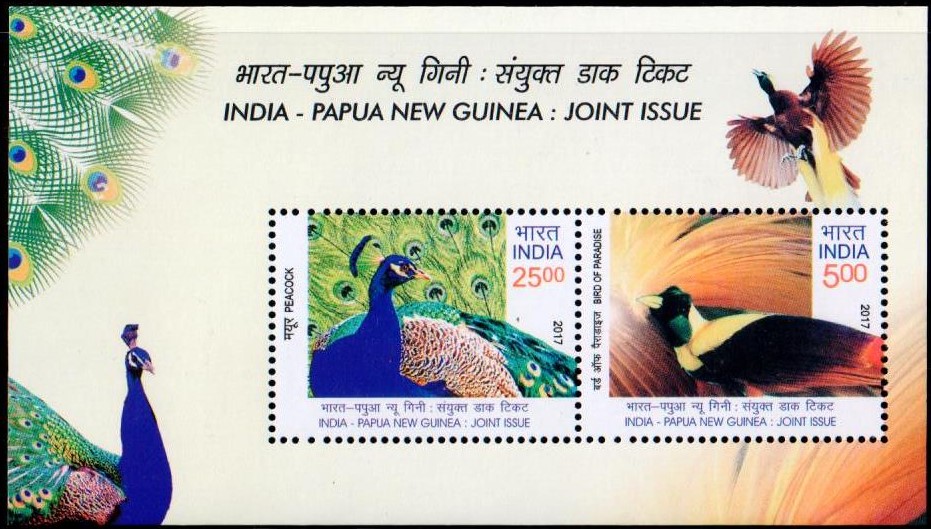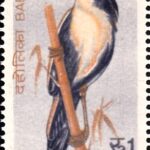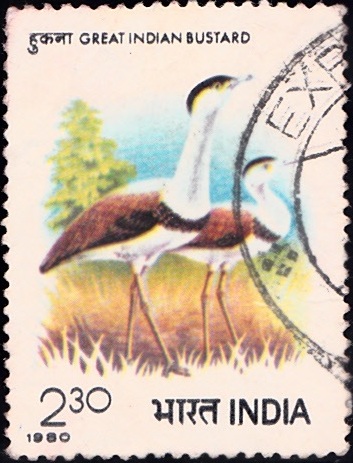
Great Indian Bustard
A commemorative postage stamp on the International Symposium on the Great Indian Bustards, Jaipur :
 Issued by India
Issued by India
Issued on Nov 1, 1980
Issued for : Indian Posts & Telegraphs Department considers it a privilege to issue a special stamp on the occasion of the International symposium.
Description of Design : The stamp depicts a male “Great Indian Bustard” with a female in its typical habitat.
The first day cover shows the bird “Great Indian Bustard”. The cancellation carries the inscription “International Symposium on Bustards Jaipur” in Hindi and English alongwith a line drawing of the bird.
Type : Stamp, Postal Used
Designed by : J. P. Irani
Colour : Multicolour
Denomination : 230 Paise
Overall size : 3.91 x 2.90 cms.
Printing size : 3.55 x 2.54 cms.
Perforation : 13 x 13
Watermark : Printed on unwatermarked adhesive stamp paper
Number printed : 15,00,000
Number per issue sheet : 35
Printing process : Photogravure
Printed at : India Security Press
About :
- Bustards (family : Otididea) are magnificent, cursorial birds, inhabiting open country. Over a century ago, they were in large numbers in different parts of the European continent and other countries. But today they are reported in small numbers only in some parts of Africa, Europe, Australia and India. There has been growing concern at the danger of virtual extinction of this avian family.
- Bustards are large gallinaceous birds. Their size ranges from that of a domestic cock to larger than a peacock. They have long legs and their feet are sturdy with three short, strong toes. They live partly in pairs and partly without a definite pair bond. The courting behaviour is an effective display of the plumage. They feed on grasses, herbs, plant parts, as well as on insects, especially grasshoppers, locusts, bugs, mice, lizards, snails and other small animals.
- The species found in India is known as Great Indian Bustard (Choriotis nigriceps). The position of this species has always been precarious. But emphasis on its protection was initiated soon after Indian gained independence. In 1952, the Indian Board for Wild Life, placed the bird on the fully protect list of endangered birds and all State Governments accepted the recommendation. The Red Data Book of the International Union for Conservation of Nature and Natural Resources (IUCN) has placed the species in the endangered list. In 1969, at the IUCN General Assembly held at New Delhi under the patronship of the Prime Minister, Smt. Indira Gandhi, the preservation of the bustard was re-emphasised. At that time the number of Great Indian Bustard in India was reported as 1260.
- A survey of Great Indian Bustard was undertaken as a follow up of this meeting. It was the first scientific bustard study in India and revealed that the species was rare and that habitat destruction, coupled with poaching and trampling of its eggs, were the chief causes of its decline. However, certain factors have helped it to survive inspite of years of heavy persecution. The bird is not restricted to its bio-tope of grassland; it moves into cultivation where, at times, it finds more food. This erratic movement makes it more difficult for the poachers to locate and destroy it. The bird has excellent eyesight and hearing powers and is capable of hiding when danger threatens.
- Today, the Great Indian Bustard is reported in Rajasthan, Karnataka, Maharashtra, Gujarat and Madhya Pradesh.
- (The above text is based on material published elsewhere and/or supplied by the sponsors).


